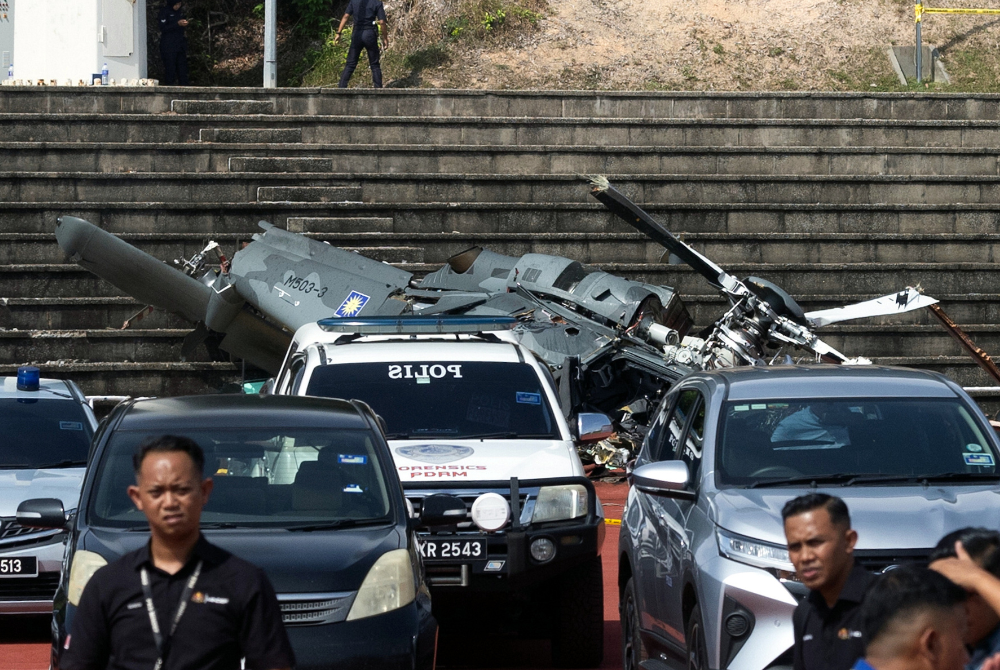Critical point failure could be a factor in the helicopter collision - Expert
Logbook scrutiny key to unveiling cause of helicopter tragedy

KUALA LUMPUR - The fatal collision or two Royal Malaysian Navy helicopters that killed 10 personnel abroad could be due to the failure of critical points of their aircraft structure, aviation expert Assoc Prof Maj Dr Mohd Harridon Mohamed Suffian said.
The Universiti Kuala Lumpur (UniKL) Search and Rescue Aviation Unit chief said that if a critical point of an aircraft was affected by certain factors, it would cause the aircraft to lose its aerodynamics.
"That’s why it might not have been able to carry out auto rotation, Usually if a helicopter loses an engine it could carry out auto rotation to land safely, cut land, cut on earth but maybe it hit the critical point, which degraded the aerodynamic rate.
"As there is no more optimum aerodynamics, the aircraft will sway to the left and right and not fly with the optimum trajectory and cause it to crash land,” he said on Bernama TV’s progrmame Malaysia Petang Ini yesterday.
On the Investigation Board set up to identify the cause of the collision, he said he expected the report about the matter would be issued in phases, with a preliminary report and a comprehensive report.
"Maybe in the first phase there will be general information or some discreet information about what happened and the crew members, including their behaviour at that time.
"They will visit the crash site to gather key components or pieces to be brought to the lab for them to figure out the intensity of the crash while in flight and through this method they will submit a preliminary report,” Mohd Harridon said.
The comprehensive report will involve the original equipment manufacturer (OEM) that will have further assessment of the data from the lab.
He said that the board would need to conduct a detailed investigation, and take in various factors, such as air conditions during the crash, and suggested that the board study the log books of both helicopters to see if there were any anomalies in the technical aspects of both helicopters in previous flights.
"Usually such helicopters have flight monitoring system that monitors aircraft health by the engineering section, they will collect post flight data and plot the aircraft’s health trend, and submit a solution with regards to the maintenance to repair and overhaul the aircraft,” he added. - BERNAMA














